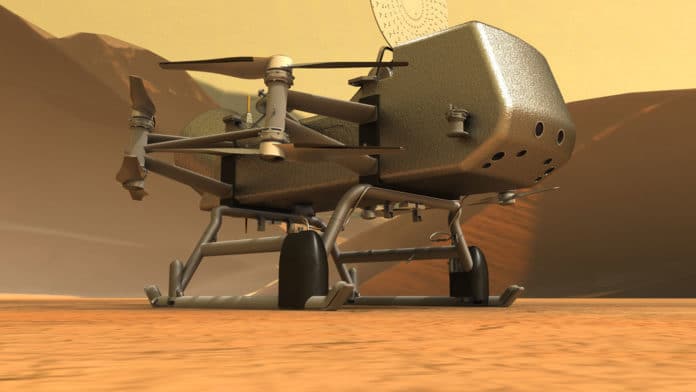NASA has delayed the Dragonfly’s launch by roughly a year, from 2026 to 2027. The launch was delayed due to the external factors, including COVID-19’s impact on the Planetary Science Division’s budget.
Dragonfly is a NASA mission that delivers a rotorcraft to Saturn’s moon Titan to advance our search for the building blocks of life. When first announced, the mission was expected to launch on the moon Titan in 2025, but the mission suffered its first delay.
Dragonfly will be the first multi-rotor drone that NASA will fly on another celestial body. When it launches, the drone will spend nine years flying on relatively regular missions to collect samples. Taking advantage of Titan’s dense atmosphere (four times denser than Earth’s), it will also become the first vehicle to “fly” with all its scientific cargo to various locations for repeated, targeted access to surface materials. By surveying dozens of locations across the icy world, Dragonfly will characterize the habitability of Titan’s environment and investigate the progression of its prebiotic chemistry.
“NASA has the utmost confidence in the Dragonfly team to deliver a successful mission that conducts compelling science,” said Lori Glaze, Director for the Planetary Science Division at NASA Headquarters in Washington. “Dragonfly will significantly increase our understanding of this richly organic world and help answer key astrobiology questions in our search to understand the processes that supported the development of life on Earth.“
